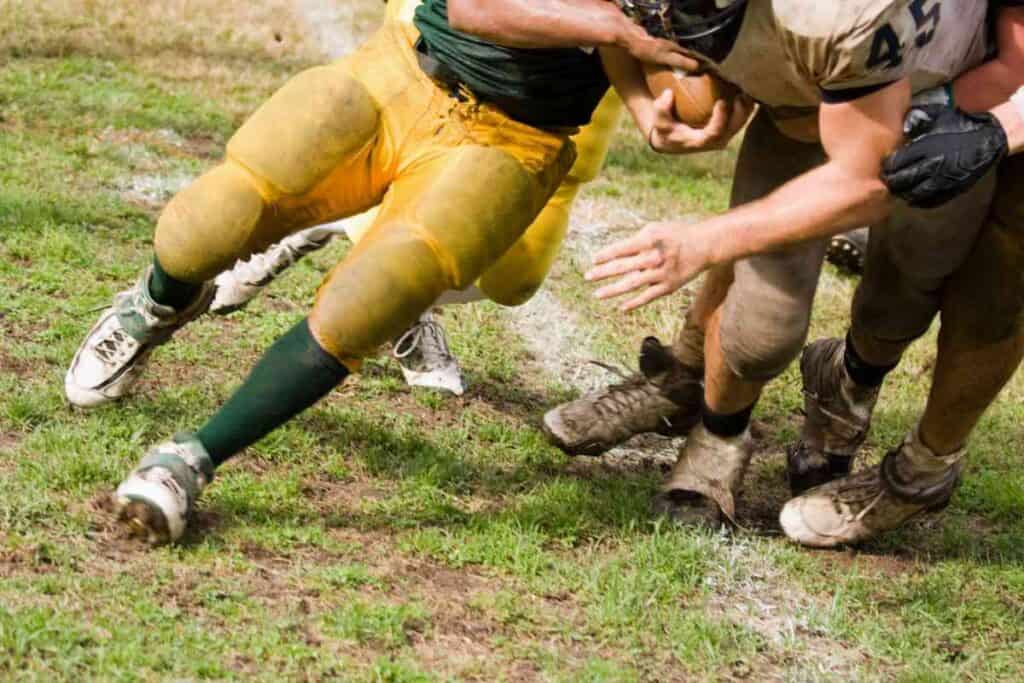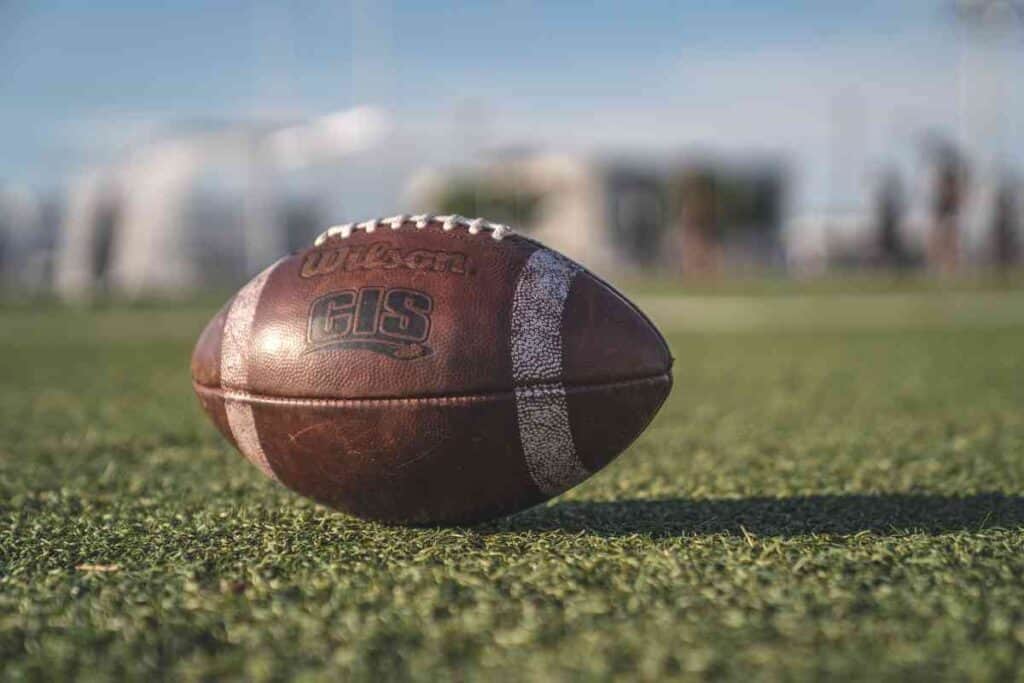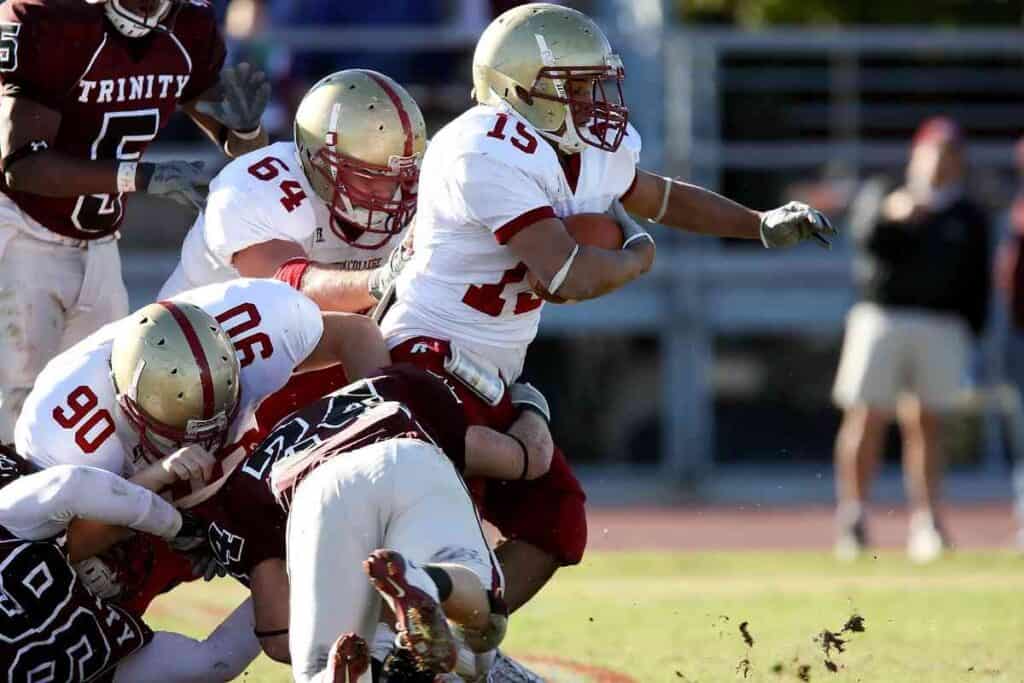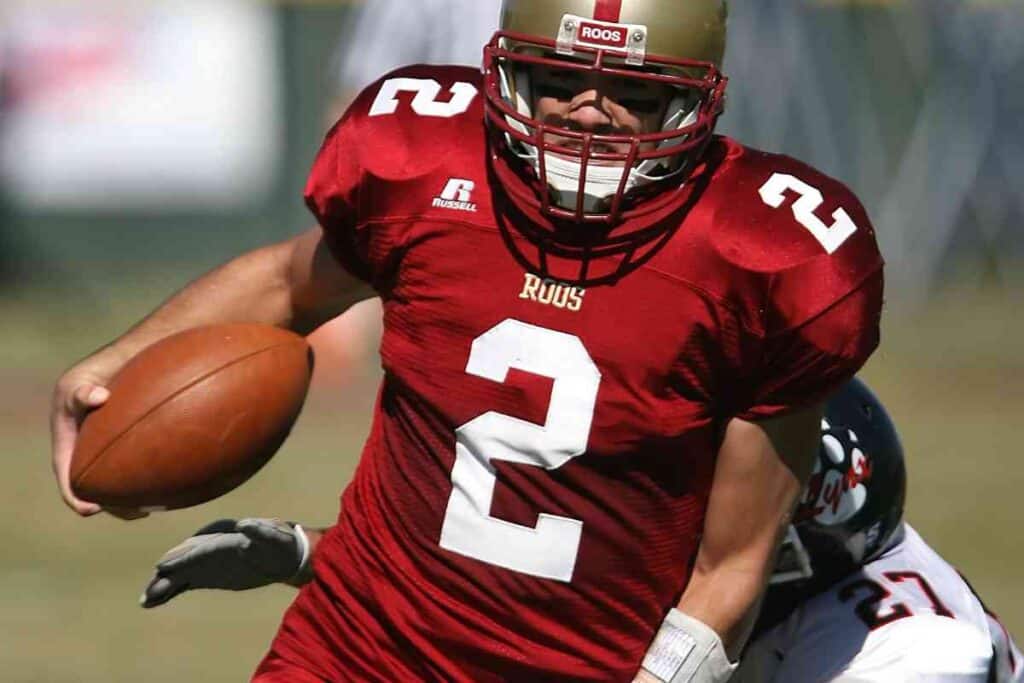Advancing The Fumble: The Rules Of High School Football
In high school football, a fumble can change the course of an entire game, but what are the rules for advancing a fumble once the ball is recovered?

Can You Advance A Fumble In High School Football?
In high school football, a fumble by the offense beyond the line of scrimmage can only be advanced by the offensive player who fumbled or the opposing team. A fumble behind the line is able to be advanced by any player.
*However, these rules can differ from state to state.
After extensively researching high school football rules and regulations, I have gathered enough information to determine if advancing a fumble is allowed in the sport.
In this article, we’ll be taking a closer look at the rules pertaining to fumbles in high school football, the NCAA, and the NFL.
What is a Fumble in High School Football?
A fumble in high school football is when someone from the offensive team loses possession of the ball. The most common offensive positions to fumble the ball are wide receivers and running backs after the quarterback throws or hands off.
While most fumbles occur due to physical contact from the defensive team such as during tackles, many happen because of simple miscalculations and mistakes.
Even the ground can cause a fumble.
The bottom line is that a fumble is when the offensive team drops the ball before they are officially down.
Fumbles offer some of the most exciting moments in a football game, as they can be incredibly strategic and opportunistic for the defensive team.
As soon as you hear people screaming ‘fumble!’, it’s important to have your eye on the ball and know who’s in possession.
What is Advancing a Fumble in Football?

Advancing a fumble is when either team gets possession of the ball and then attempts to gain additional yards against the other team. As soon as the ball hits the ground after is dropped, it’s up for grabs for any player on the field to recover.
To advance a fumble, a team must grab the fumbled ball and then run toward the opposing team’s end zone.
If the defensive team is able to recover the fumble, a turnover will be declared and the offense will lose possession immediately.
If the offense recovers, the ball is dead on the spot and the game continues where the ball was dropped.
Can a Fumble Be Advanced in High School Football?
In high school football in the United States, as governed by the National Federation of State High School Associations (NFHS) rules, the ability to advance a fumble that occurs beyond the line of scrimage can vary depending on the situation.
- During a running play: If a ball is fumbled during a running play, any player from either team can recover and advance the ball.
- On a fourth down play or during a try (after a touchdown): If the offensive team fumbles the ball, only the player who fumbled the ball can recover and advance it for that team. If any other player from the offensive team recovers the ball, the ball is dead at the spot of recovery and cannot be advanced. If the defensive team recovers the fumble in these situations, they can advance the ball.
- Fumbles behind the line of scrimmage: Any fumble behind the line of scrimmage is a live ball and can be advanced by either team.
These rules are in place to avoid intentional “fumbles” or forward tosses that act as an additional forward pass or to avoid having offensive players other than the ball carrier intentionally knocking the ball forward on a fourth down or try in an attempt to gain more yards or score.
However, always be aware that high school football rules can differ from state to state, and it’s a good idea to check with your local high school athletic association for any specific modifications or interpretations of the NFHS rules.
How to Recover a Fumble in High School Football?

If the offense fumbles, the other team can take advantage of the situation and grab the ball. This would result in a turnover with the opposing team gaining possession.
As soon as the ball carrier fumbles, the team that dropped the ball needs to urgently recover it before the defense gets a hold of it.
A player can take a couple of different approaches to recover the ball.
One method to recover a fumble is to scoop it up while still in motion.
This requires quite a bit of dexterity and it can often lead to a failed recovery because of the football’s awkward shape.
Most coaches will tell you the best way to recover a fumble is to jump on top of the ball and tightly hold it before the other team gets a chance to grab it. This ensures that your team retains possession of the ball without a turnover.
Remember that the player who dropped it does not need to recover a fumble.
Any player can recover a fumble in high school football, regardless of their position or team.
Can You Intentionally Fumble Out Of Bounds?
A common misconception in football is that you can intentionally fumble out of bounds. This can seem like a strategic move for the offensive team, but the NFL rule book strictly prohibits intentionally fumbling out of bounds.
With that said, there are exceptions to this, especially if it was not intentional. A player from the offensive team could theoretically be running with the ball and drop it forwards out of bounds as they are being tackled.
This would technically fall into a gray area in high school football, as the ball would be down on the spot where it was dropped out of bounds if it was accidental.
The referee would have to assess the play to determine if the fumble was intentional or not.
If the ref decides that the ball was fumbled out of bounds intentionally, this would usually be an illegal forward pass resulting in a penalty with 10 seconds being removed from the clock.

Can a Fumble Be Advanced in the NFL and NCAA?
Unlike high school football, the NFL and NCAA both allow teams to advance a fumbled ball.
The NFL rules are commonly referenced for fumbles and regulations state that the recovering team can run the ball toward the opponent’s end zone for an advance.
Both the NCAA and the NFL have very similar rules for fumbles, with minor changes depending on the circumstances. However, fumbles are allowed to be advanced in both leagues of the sport.
Key Takeaways
- You cannot advance a fumble in high school football.
- In high school football, as soon as the ball is fumbled and recovered, it is declared dead on the spot with the recovering team claiming the ball.
- The NFL and NCAA both allow fumbles to be advanced after they have been recovered.
Frequently Asked Questions
Can You Advance A Fumble In High School Football?
No, you cannot advance a fumble in high school football. Once a fumble has been declared and possession has either been claimed or reclaimed by a team, it would be considered a down. When the ball is dropped before a down is declared, the fumble is in effect, and either team can technically grab it.
Can You Fumble The Ball Forward In High School Football?
No, you cannot intentionally fumble the ball forward in high school football. If a player intentionally fumbles the ball forward, it will be considered an illegal forward pass, and the play will be penalized.
Do You Get Yards For Advancing A Fumble?
No, you do not get yards for advancing a fumble in high school football. Once a fumble has been declared and possession has either been claimed or reclaimed by a team, it would be considered a down.
Why Can’t You Advance A Fumble In The Last 2 Minutes?
There is no rule that prevents a team from advancing a fumble in the last 2 minutes of a high school football game. However, there is a rule that stops the clock after a change of possession in the last 2 minutes of the game, which can make it more difficult for a team to mount a comeback.
How Does A Team Receive A First Down?
A team receives a first down in high school football by advancing the ball 10 yards or more from the point where the ball was placed into play on the previous down.
What Is It Called When The Defensive Player Catches A Pass Intended For An Offensive Receiver?
When a defensive player catches a pass intended for an offensive receiver, it is called an interception. The defensive player gains possession of the ball and can then attempt to advance it down the field.
